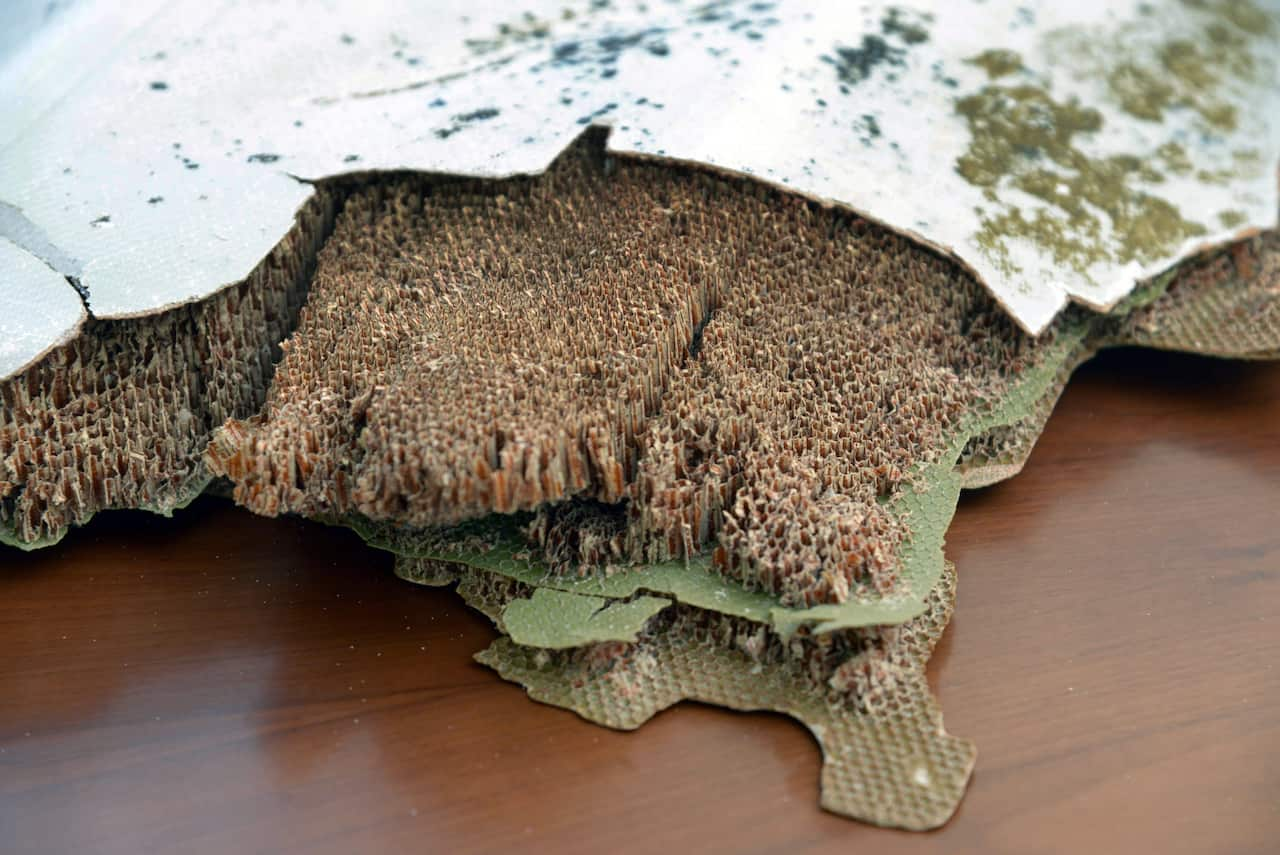The Australian Transport Safety Bureau (ATSB), which is coordinating the search for the Boeing 777 Malaysia Airlines plane that disappeared en route from Kuala Lumpur to Beijing on March 8, 2014 carrying 239 passengers and crew, added that it was not yet able to link the pieces to MH370.
American Blaine Gibson brought the two recently recovered items from Madagascar to Australia to be forensically investigated by the ATSB on September 12 and told local media then that one piece appeared to show "some signs of melting ... as you see when something is exposed to fire".
But Australian Transport Minister Darren Chester said after an initial examination of the fibreglass-honeycomb composite debris that "what is known is that contrary to speculation there is no evidence the item was exposed to heat or fire". "With the agreement of the government of Malaysia, the ATSB examined the items but found no manufacturing identifiers such as part numbers or serial numbers that provided clues as to the items' origins," Chester added in a statement.
"With the agreement of the government of Malaysia, the ATSB examined the items but found no manufacturing identifiers such as part numbers or serial numbers that provided clues as to the items' origins," Chester added in a statement.

A piece of plane debris possibly belonging to missing flight MH370, is displayed during a press conference by Mozambique Civil Aviation Authority. Source: LUSA
"At this stage it is not possible to determine whether the debris is from MH370 or indeed even a Boeing 777.
"Further work will be undertaken in an attempt to determine the origin of the items, specifically whether they originated from a Boeing 777 aircraft."
It is not yet known why the jet went down. No trace of the plane has been found in the current 120,000-square-kilometre (46,000-square-mile) search zone in the southern Indian Ocean, fuelling speculation it may have crashed outside the area.
Several pieces of debris linked to the flight have been discovered along western Indian Ocean shorelines. The first piece found was a two-metre (six-foot) wing part known as a flaperon that washed up on the French Indian Ocean island of Reunion in July 2015.
The ATSB said in its report on the two pieces recovered near Sainte Luce on the southeast coast of Madagascar that a dark grey colouration on most of both sides of the items were due to "an applied resin and was not the result of exposure to heat or fire".
The larger piece had three small marks "resulting from localised heating", but there was "no evidence of overall gross heat damage".
"The origin and age of these marks was not apparent," the ATSB added.
More than 110,000 square kilometres of the search area has been scoured so far, Australia said Wednesday, with the hunt set to be completed in December.
Share


